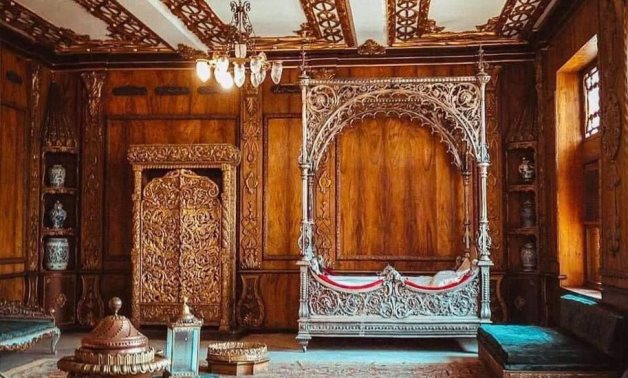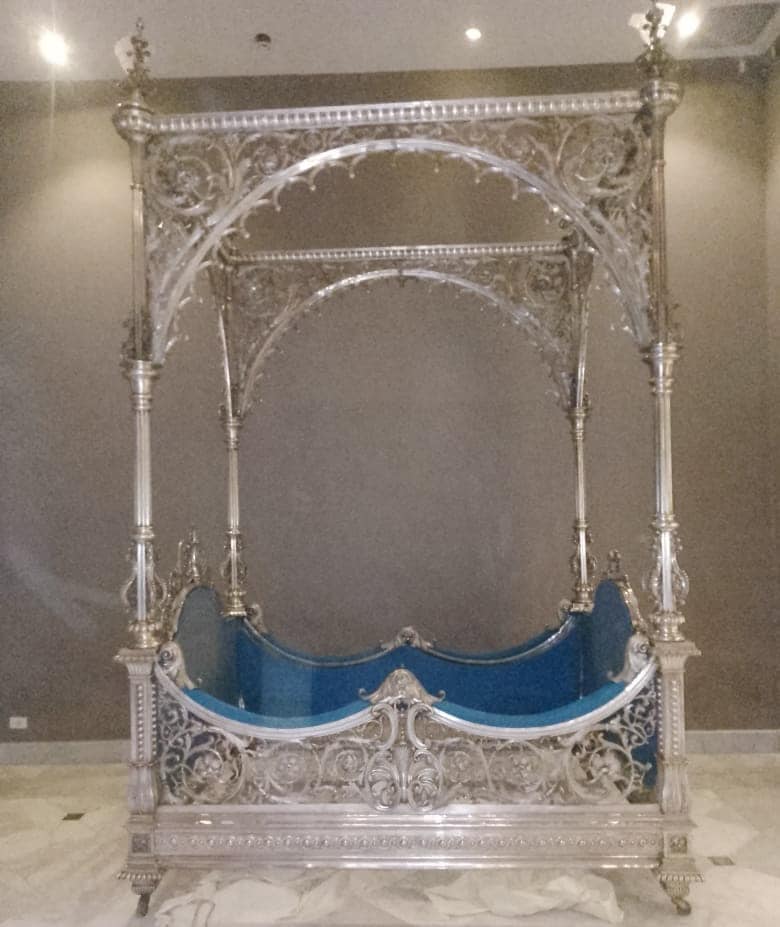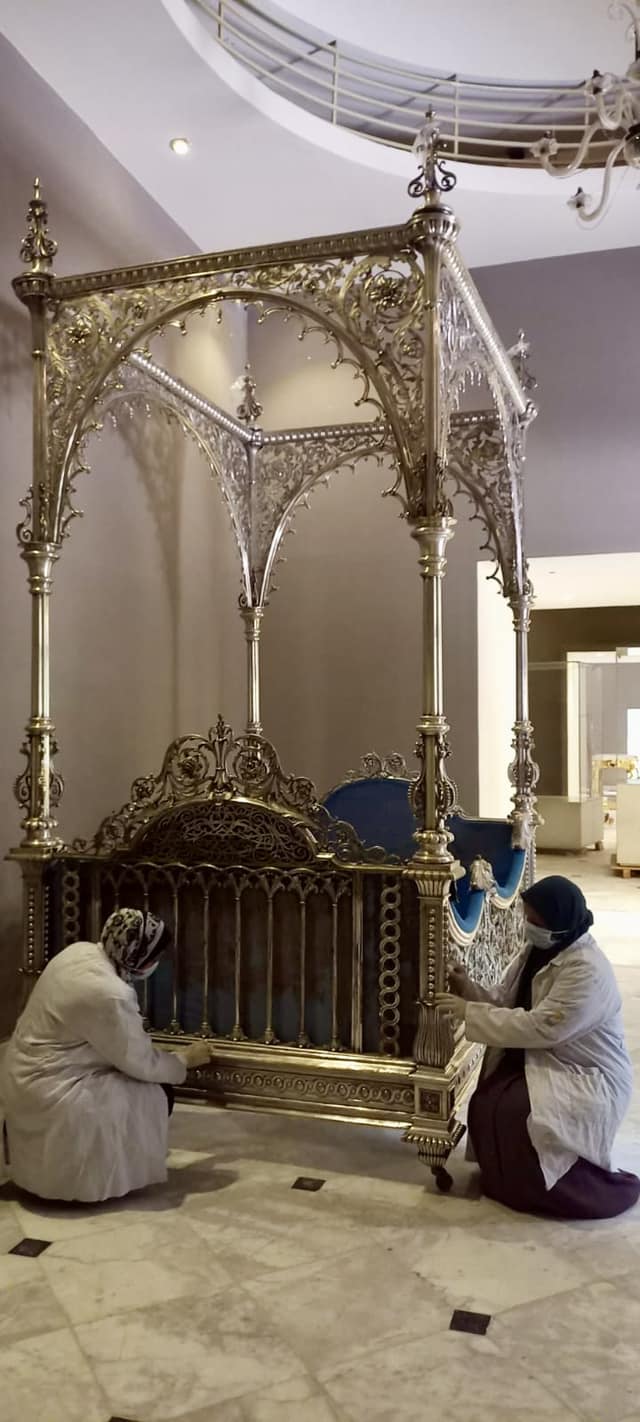
A photo from inside the Manial Palace Museum in Cairo of the royal bed of Amina Hanem Elhamy - Press photo
CAIRO – 21 April 2024: The Egyptian Cabinet has refuted rumors surrounding the alleged disappearance of a highly valuable silver bed that belongs to the Mohammed Ali royal family from the Manial Palace Museum in Cairo.
The bed, which is the prized possession of Amina Hanem Elhamy, the mother of Khedive Abbas Helmy II and Prince Mohammed Ali Tewfik, sons of Khedive Tewfik Pasha, is hailed as one of the most significant and irreplaceable artistic masterpieces.
Crafted from pure silver, it is renowned for its exquisite decorations and engravings, the Cabinet said in a statement on Sunday, citing the Ministry of Tourism and Antiquities.

The ministry affirmed that the bed is securely housed within the Manial museum and is currently undergoing necessary restoration work in preparation for its exhibition in the designated hall that showcases Amina Hanem’s belongings.
Amal Seddiq, the Director General of the Manial Palace Museum, clarified that prior to the restoration process, the bed, weighing about 850 kilograms, was on display at the Winter Hall of the Throne Palace.
The Cabinet has assured the public that the upcoming exhibition, which includes the distinguished silver bed, will be unveiled in the near future.

The Prince Mohammed Ali Manial Palace Museum stands as one of Egypt's most magnificent and historically significant museums.
It encapsulates a crucial period in modern Egyptian history and boasts a unique architectural design that harmoniously blends Islamic styles with various artistic influences that have traversed the land, such as the Mamluk, Levantine, Moroccan, Andalusian, Persian, and Ottoman schools.
The palace serves as a comprehensive institution showcasing diverse elements of Islamic arts.
Comprising multiple palaces enclosed by an outer wall, the Manial Palace Museum encompasses the reception hall, clock tower, Sabil, mosque, hunting museum (added in 1963), residence palace (established in 1903), throne palace, private museum, golden hall, and a splendid surrounding garden of unparalleled beauty.
After undergoing restoration, the museum reopened its doors in 2015, delighting avid visitors and history enthusiasts alike.
Comments
Leave a Comment